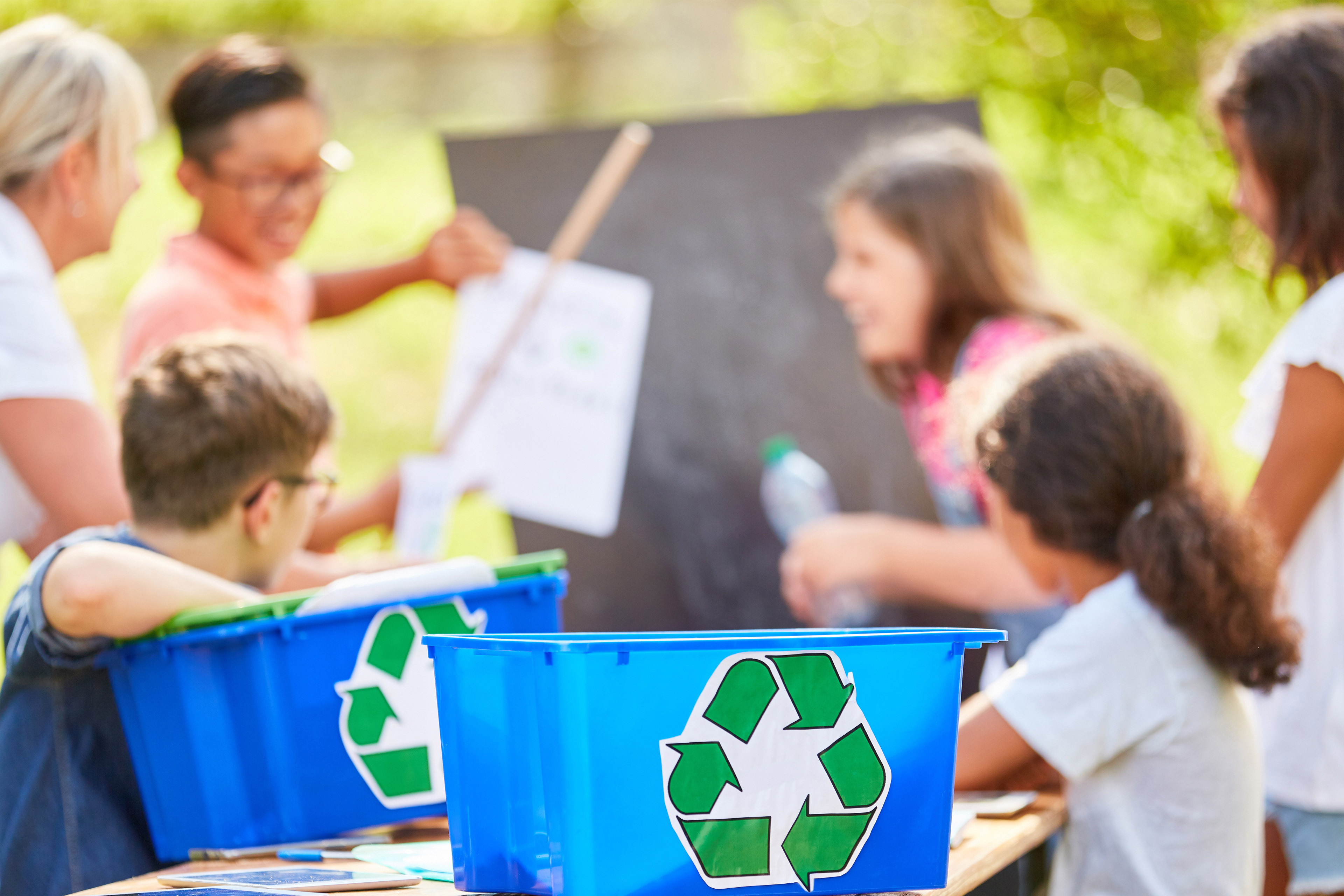EY refers to the global organization, and may refer to one or more, of the member firms of Ernst & Young Global Limited, each of which is a separate legal entity. Ernst & Young Global Limited, a UK company limited by guarantee, does not provide services to clients.

By integrating circularity into their electronics design and recovery strategies, businesses can realize environmental and economic benefits.
In brief
- Only 17.4% of electronic waste is recycled globally, leading to heightened environmental and health issues, particularly in economically developing countries.
- Electronic waste is leading to a loss of at least US$57 billion annually through the disposal of key raw materials, such as iron, copper, gold and others.
- Adopting circular models can help companies access untapped opportunities and lower environmental impact to address critical e-waste challenges.
Waste from electronics, such as cell phones, computers and other digital devices, represents the world’s fastest-growing waste stream, increasing at an alarming pace of 2Mt per year¹: equivalent to roughly 9,000¹ Statues of Liberty. In 2019 alone, approximately 53Mt of e-waste (excluding photovoltaic panels) were generated, with 2030 projections estimated to exceed 74Mt. In addition, 80% to 85% of e-waste is not formally collected or properly managed.
E-waste is often shipped to developing countries, leaking into the informal sector and thereby intensifying human rights issues globally. This waste is particularly dangerous because it contains several toxic additives and hazardous substances, including mercury, brominated flame retardants (BFRs), chlorofluorocarbons (CFCs) and hydrochlorofluorocarbons (HCFCs). These materials, if not properly controlled, can expose locals to high levels of contaminants (e.g., lead and cadmium), airborne pollutants and contaminated groundwater, which can cause significant human health risks, such as cancers, neurological damage and diminished IQs.
Other challenges beyond human and health risks associated with e-waste include:
- Lack of recycling infrastructure: Existing waste management technologies, rapid urbanization, and limited institutional and human resource capacities limit the ability to properly scale recycling capabilities. India, for example, generates more than 3Mt of electronic waste annually but recycles less than 3% (Kretchmer 2021).
- High costs and recycling difficulties: Recovery of materials, such as germanium and indium, is challenging because they are disbursed across multiple components in one device that cannot be easily disassembled. Lithium batteries pose additional challenges, as the recycling infrastructure cannot easily adapt to the rapid technological changes and differing device sizes (Yanamandra, Pinisetty and Daoud 2022).
- Low recycling rates: Only 17.4% of global e-waste is recycled (Kuehr, et al. 2022). These rates are further exacerbated by poor disposal habits of treating e-waste as household waste, which may encourage the illegal transboundary movement of e-waste (Kuehr, et al. 2022).
- Enforcing regulations: A lack of enforced standards for collection, dismantling and treatment hinder the environmentally sound management of e-waste.
Electronic devices house a wide variety of valuable materials, such as iron, copper and gold, which are worth a combined US$57 billion (Kuehr, et al. 2022). Only US$10 billion is recovered in an environmentally sound manner while the rest piles up, at great societal risk, in landfills or in the open environment (Forti 2020). Adopting circular business models presents a unique opportunity for businesses to create value, lower environmental and human health impact, and generate profitability.
Implementing circular economy business models
Current economic systems assume a constant supply of natural resources, resulting in a “take-make-use-dispose” linear model (Centre 2015). Circular business models, on the other hand, focus on redesigning product-service systems to enhance business capabilities and market competitiveness. A shift toward circular economy models can help companies not only access untapped financial and business opportunities but also lower their overall environmental impact. For example, a company can recover over 100 times more gold from one ton of mobile phones than traditionally mining one ton of gold ore (Ryder and Houlin 2019). To help realize the value from a circular economy model, and address critical e-waste challenges, companies can leverage three alternative business models:
1. Shared economy model for electronics
A shared economy model helps generate revenue through provisioning services instead of selling products. This model shifts conventional producer-consumer relationships and re-evaluates traditional value chains. For instance, companies can lease electronics to consumers; once the device reaches its maximum life-span, the producer recycles, maintains and refurbishes the device. Additionally, by investing in durable and modular design strategies, companies can enhance product value by simplifying disassembly and recyclability of materials and capitalize from the recovery of precious metals (Atasu, Dumas and Van Wassenh 2021).
To support recyclable material sourcing processes, digital tools (e.g., digital passports and blockchain) can help companies source key materials from secondary markets and forecast supply and demand dynamics (CEP 2022). Leveraging secondary markets is an effective strategy for companies to source scrap metals from other industries, such as aerospace or advanced manufacturing, to create, for example, carbon-fiber-reinforced polycarbonate bases that could be used for assembling new laptops (Murphy 2021). Utilizing recyclable and modular designs in a shared model can optimize product retrieval efficiencies and increase their life-spans.
2. Products-as-a-service (PAAS) model for electronics
Another effective circular business strategy is the PAAS model. In this scenario, a customer pays a fee to use an electronic product but does not own it. For example, an IT company may utilize a PAAS model for its computer hardware products and offer a monthly subscription fee for users, which encourages the company to refurbish and remanufacture its products at the point of return.
Due to the PAAS “fee-based” model, a producer is incentivized to manufacture products that incorporate product life extension (PLE) designs, modularity and proper treatment at the end of life.
Designing for PLE can fall short if there is not a cost-effective and globally functioning reverse logistics system that guarantees the proper recovery and disassembly of products (CEP 2022). Due to the hazardous components of e-waste, recyclers can leverage technologies and artificial intelligence to properly sort and identify the material composition of products and deploy robotics to disassemble materials while reducing health risks and contamination. An IT asset disposition (ITAD) and electronic equipment recycling company, for example, could adapt to the semiconductor shortage by utilizing technology to properly extract chips from e-waste and expand precious metal usage (CEP 2022).
3. Product ownership model — utilizing PLE and design for recyclability (DFR) principles
Finally, a company may default to the traditional product ownership model to give customers full control over the product lifecycle. Unlike in the shared economy and PAAS models, a manufacturer in this model loses the incentive to manufacture products that promote PLE and DFR principles — a key tenet of the circular economy.
In the product ownership model, a company could identify stages in the product lifecycle where improvements can be made to extend the use of the product. Here, companies can emphasize the recyclability and modularity of a product, as well as create incentives for consumers to return their products for refurbishments or resale. A cellular device company could develop a buy, repair and trade-in program to promote proper recycling practices and expand secondary markets for recovered metals.
Moving ahead
E-waste circular business models offer a unique opportunity for companies to create value in terms of increased profitability and lower environmental impact. Companies should consider the following as they develop a holistic circular model for their businesses:
- The initial success of a circular economy business model is designing one that aligns with the company’s current resource capabilities. A shared economy model may initially only work for companies with modular-designed products, such as commercial photocopiers where an ink cartridge replacement may be more economically feasible than retrieving an intricately constructed washing machine company’s assets (Atasu, Dumas and Van Wassenh 2021). A company may choose a host of levers from the circular business models, such as PAAS subscription services, modular design of a product‘s functional components and sourcing durable materials to develop a meaningful strategy.
- Cross-industry and stakeholder partnerships are also critical in implementing a sophisticated circular strategy to address e-waste globally. In 2021, the Circular Electronics Partnership (CEP) was created to coordinate efforts toward achieving circularity business models. The CEP aims to drive cross-industry collaboration to scale circularity initiatives, such as the development of secondary markets; circular incentives for consumers, such as take-back programs; and achieving cost-effective reverse logistics (CEP 2022). Partnerships such as the CEP are vital to support and scale new strategies with closed loop models in mind.
- Additionally, the circular strategy should focus not only on the engineering and product design levels but also on syncing a company’s full value chain, from the design and business model stages, to providing access, education and infrastructure for consumers at scale. Exclusively designing circular products that still end up in a landfill isn’t better than linear products (as it hasn’t closed the loop).
By leveraging strategic circular economy business models to address the tsunami of e-waste, companies can capitalize from financial opportunities, strengthen value chain relationships, and create long-lasting organizational value.
Shubhra Verma, Brian Matthews, Kristin Bianca, and Elizabeth Tual of the Climate Change and Sustainability Services practice of Ernst & Young LLP contributed to this report.
Summary
In the last five years, e-waste quantities have risen three times faster than the world’s population and 13% faster than the world’s GDP. The global quantity of e-waste is increasing at an alarming rate and has led to heightened environmental and health issues, particularly in economically developing countries. The rise has also led to an estimated loss of at least US$57 billion worth of key raw materials, such as iron, copper and gold. This article will examine the role businesses can take to integrate circularity within their electronics design and recovery strategies to realize environmental and economic benefits.
Related articles
Why nonfinancial reporting should include enhanced circularity aspects
Metrics to track and measure environmental and business performance are increasingly necessary. Learn what we found across industries in our study.
Circular economy: Navigating the evolving global policy landscape
Historically, geographical limitations and scarcity of natural resources have been key drivers for implementing circular economy policies.
If it’s broken, fix it: how chemical recycling can fix the broken plastics cycle
Leaders in the chemical industry are urged to consider the benefits of chemical recycling, which can scale with the proper technology investments.
How EY can help
-
EY teams can help address ESG and sustainability issues, investor concerns and improve ESG performance. Find out how.
Read more





